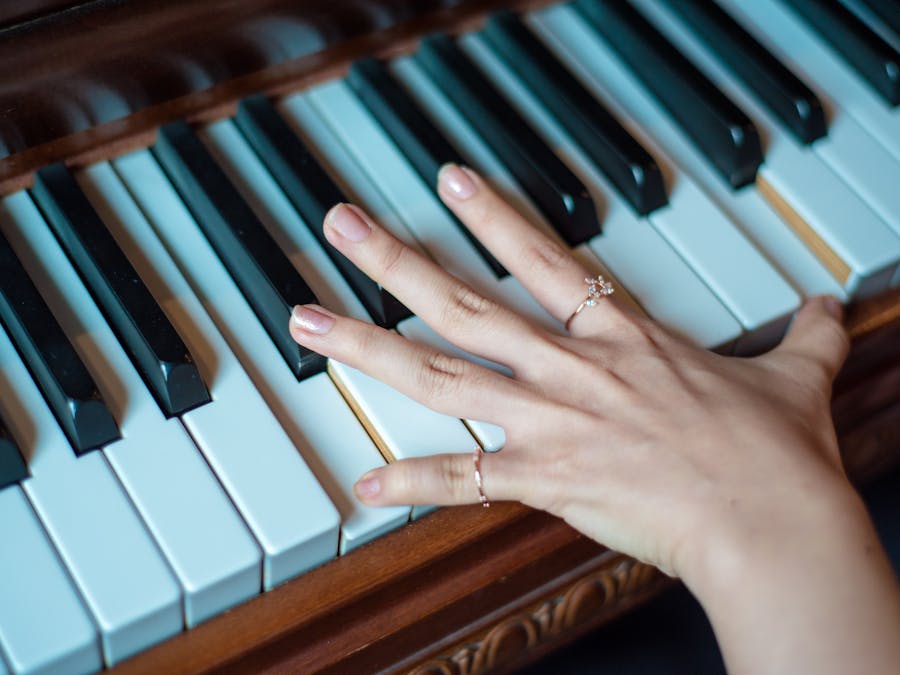 Piano Guidance
Piano Guidance
 Piano Guidance
Piano Guidance

 Photo: Athena
Photo: Athena
Digital pianos and keyboards are not supposed to need tuning like acoustic pianos – often this is one of the reasons that we buy them in the first place, to avoid the money and hassle of getting a piano tuned regularly.

5-3 Chords 5-3 means root position chord. Look at the bass note (B). Add a note which is a fifth higher (F#) and another which is a third higher...
Read More »
Ivory is heavy and cold to the touch when you put it to your cheek. It will usually have ” Schreger lines.” These lines may be cross hatching or in...
Read More »
Pianoforall is one of the most popular online piano courses online and has helped over 450,000 students around the world achieve their dream of playing beautiful piano for over a decade.
Learn More »Sometimes it seems like your digital piano or keyboard is a bit out of tune, even though that seems impossible. Today I’ll discuss how this can happen, and how to fix it. Digital pianos and keyboards can be out of tune relative to 440 Hz. This can be rectified in two ways: transposing in small increments back to 440 Hz, or if that fails, performing a factory reset. I’ll explain how below. Digital pianos and keyboards are not supposed to need tuning like acoustic pianos – often this is one of the reasons that we buy them in the first place, to avoid the money and hassle of getting a piano tuned regularly. Digital pianos/keyboards just use built-in pre-recorded sounds, so there is no mechanism that can gradually become out of tune in the way that the strings of acoustic pianos do over time. However, just because a digital piano doesn’t “need tuning” in the traditional sense, that doesn’t mean that it can’t be out of tune relative to the standard Western 440 Hz. Sometimes the tuning of a digital piano seems slightly “off”. Not so much that it’s been transposed a whole semitone or more, but just a fraction of a semitone. Many people are familiar with how to transpose their keyboard up or down by a certain number of tones or semitones, but what is less well-known is that many digital keyboards can also be transposed by small increments of Hz. Often keyboards can be transposed up or down by as little as 0.2 Hz at a time. This gives us two options for how to return a digital piano to standard tuning:

Over time, ivory darkens and/or turns yellow in color and develops surface coloring called a patina. This change is color is an indicator if its...
Read More »
The most common keyboard sizes are Full-Sized (104 key), TKL (87 key), and 60% (68 key). Each size is unique with different features. There are...
Read More »If you can’t find the manual for your digital piano, and you don’t have MainStage, then you can try method 2: perform a factory reset.

In extended chords (7th, 9th, 11th and 13th) the 5th is usually omitted – partly to keep these chords from sounding too harmonically 'dense'. The...
Read More »
1. Accordion - Could there possibly be another #1? I declare accordions the geek instrument of choice. The history and complexity of the squeezebox...
Read More »Even if your digital piano has been transposed down or up from 440 Hz, it should still be in tune relative to itself e.g. all of the notes “A” on the keyboard should still be in tune with each other. It is normal for the very high notes or very low notes to sometimes seem slightly out of tune, but if any other notes are out of tune relative to the rest of the notes on your keyboard then something is more seriously wrong, and I would recommend getting in touch with a repair shop. It is unlikely that the steps above will fix that more serious issue, although I guess it is worth a try…

Bottom line: Don't coast in neutral. It's dangerous and won't save fuel. Turning off the key at traffic lights might. Jul 29, 2010
Read More »
assault case Rod Stewart and his son have pleaded guilty to battery in an assault case stemming from a New Year's Eve 2019 altercation with a...
Read More »
We find that all believers are chosen of God (Titus 1:1 NASB). Believers were “predestined according to His purpose who works out all things after...
Read More »
12/8 The time signature is 12/8, which means that there are four groups of three quavers in a bar; this is a type of compound time signature. Many...
Read More »